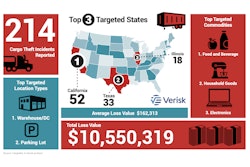The path to a healthy heart is paved with proper nutrition and exercise. Nutrition labels can be daunting and difficult to understand, but paying attention to them can keep you focused on what you’re consuming and help you pay attention to
Nutrition labels can be daunting and difficult to understand, but paying attention to them can keep you focused on what you’re consuming and help you pay attention to focus on heart healthy options.
So how do you make sense of all of the information found on nutrition labels?
Try three tips based on information from the American Heart Association (AHA):
1. Serving Size
The serving size is listed first on the nutrition label. It tells you the size of a serving and lists the number of those servings per container. The rest of the information on the label is listed in the amount per serving, which tells you how much of that list item can be found in a serving. A serving size isn’t the same as what you’ll end up putting on your plate, but it is a measurement guide to let you know how many calories and grams of nutrients you’re ingesting.
2. Calories Per Serving and Percent Daily Value
Calories are listed per serving, so if you’re portioning out multiple servings then you’ll need to multiply the number of calories by the number of servings to track how many calories you’re eating. The Percent Daily Value, as listed on the nutrition label, tells you what percentage of each listed nutrient is in a single serving.
3. Limit Certain Nutrients and Make Sure You’re Getting Enough of Others
The AHA recommends, based on a 2,000 calorie diet, limiting the following: no more than 11-13 grams of saturated fat, no more than 1,500 miligrams of sodium and as little trans fat as possible. However, you should make sure you’re getting enough dietary fiber, protein, calcium, iron and vitamins.
[gtbutton link=”http://www.truckersnews.com/heart-month-2016/”]Follow All Our Healthy Heart Stories Here[/gtbutton]







